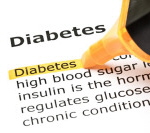
Insulin resistance is a metabolic condition that increases the chances of developing pre-diabetes, type 2 diabetes, and heart disease. The term insulin resistance is used when a person makes insulin but resists the effects of insulin.
What are signs and symptoms of Insulin Resistance?
Insulin resistance and hyperinsulinemia (elevated levels of insulin) are early warning indicators of being at risk for developing pre-diabetes and type 2 diabetes. Insulin resistance can also be an indication of another underlying disease or disorder such as Addison’s disease, polycystic ovarian syndrome (PCOS), Cushing’s Syndrome, or thyroid problems like Hashimoto’s thyroiditis. If you have any of those medical conditions, you could also suffer from insulin resistance.
A person that is insulin resistant often has elevated fasting blood glucose (blood sugar) levels, but some patients with insulin resistance may have normal blood glucose (fasting and after meals), and might even “pass” an oral glucose tolerance test (OGTT). In fact, some people with insulin resistance may experience rapid changes in blood sugar and even suffer from bouts of hypoglycemia (low blood sugar). But in order to maintain normal glucose levels, a person who is insulin resistant will over produce insulin. When insulin levels are elevated it is called “hyperinsulinemia.”
Five Classic Physical Signs of Insulin Resistance

Acanthosis Nigricans: (AN) is typically characterized by hyperpigmentation (darkening of skin pigment) and usually accompanied by a velvety change in texture of the skin that is affected. Characterized by darkened skin patches; common in people whose body is not responding correctly to the insulin produced by the pancreas (insulin resistance). This skin condition is also seen in people who have pre-diabetes or type 2 diabetes, PCOS and some thyroid conditions
Skin Tags: A skin tag is a benign (non-cancerous) skin growth that can occur on the body or face. They can be are smooth or wrinkled, skin-colored or just slightly darker than skin color, and vary in size and can grow as large as a big grape. Read more about skin tags…
Unexplained Weight Gain: People suffering from insulin resistance often begin to gain weight without changing their eating habits. They may gain weight rapidly over weeks, months, or during the course of the year. Excess (over produced) insulin is not excreted – it is stored as fat in the body. This is one reason why people with insulin resistance gain weight more easily than those who are not insulin resistant.
Menstrual Irregularities: Women and girls who have irregular or absent periods should be checked for insulin resistance. Polycystic ovarian syndrome is the most common cause of infertility in females who have gone through puberty and is often associated with insulin resistance.
Hirsutism:Â Excess facial and body hair, especially on girls and women, can be another sign of insulin resistance.
Other Health Problems that can be Signs of Insulin Resistance
Many people with insulin resistance also have:
- High blood sugar (blood glucose), but they may also have episodes of low blood sugar, or even normal blood sugar levels;
- Carry excess weight around the waist;
- Have high LDL (bad) blood cholesterol levels, low HDL (good) cholesterol levels, and high levels of triglycerides (a form fat in the blood);
- High blood pressure;
- Sleep disorders;
- Rapid mood swings;
- Infertility issues.
Who Should be Tested for Insulin Resistance? contains a chart detailing at-risk signs and symptoms by age and gender.




